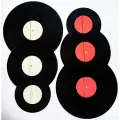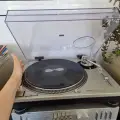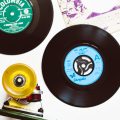Are you worried you might be in possession of, heaven forbid, fake vinyl records, much to the disdain of collectors everywhere? Are you wanting to know for sure whether one of your most prized records is fake, even if you end up having to use it as vinyl decor?
Well, you are in the right place, for today we will be glancing through the world of counterfeit records and how you can go about navigating it, showing you a few key tips on how to tell the real deal from a fake.
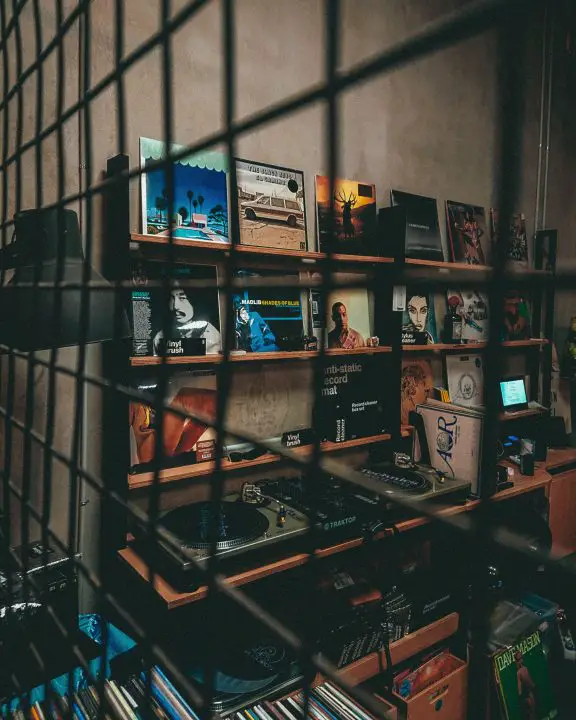
Vinyl Sleeve
In comparing two counterfeit vinyl, you ought to be able to tell the difference quite quickly once they have been removed from their respective sleeves. One of the major points for consideration between counterfeit records and the real deal, and one that should be easily identified by anyone, is the quality of the center label.
While I have encountered many a counterfeit record that has used fake copies of the album cover in question that are easily recognizable as such, I have come across just as many records that have had a believable and authentic album sleeve, despite the fact they may as well have been printed onto dead wax.
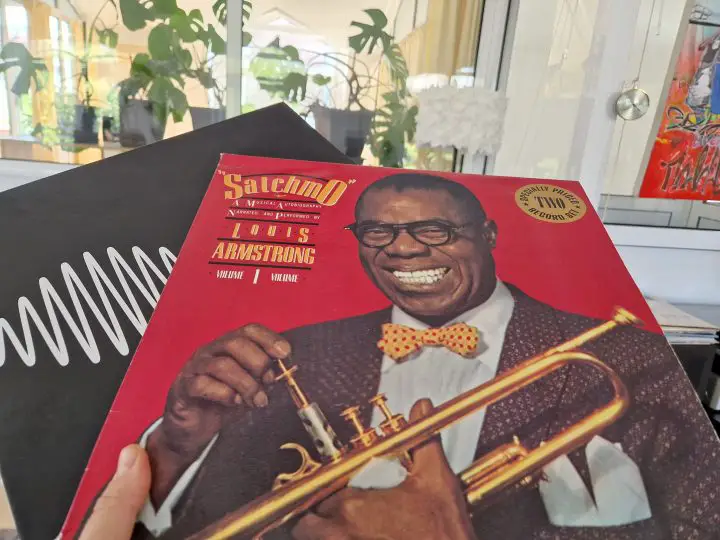
Since the business of counterfeiting records is only getting more advanced – just as the business of counterfeiting anything is advancing with the progression of the various technologies involved – the only real way to be sure that a record is a genuine article is to inspect the record itself, to feel its heft and to check the various inscribed numbers on the face.
The center label, too, is a valuable resource for judging whether a record is real or fake since this can very easily be botched by whoever did the counterfeiting.
Center Label
Regarding the inspection of a center label, the material will be of utmost importance in assessing whether it is a face vinyl record or not.
The text of the stamp on the original will usually look sharper, and in an age of digital reproduction will not look pixelated or compromised by any bit rate distortion. In a lot of examples, the text will even be embossed into the paper by the printing process, a detail that a bootleg record might neglect, hovering adhesively on the surface.
A quick way to tell whether a record’s text is embossed or not is to angle said record in relation to the light in a space. Though it might not seem so obvious at first when compared side by side the differences between real records and counterfeit records will be loud and clear.
Since there can be so much money at stake in the exchange of records, it is vital that collectors ensure they are getting the genuine article whenever they purchase something, whatever it is they are purchasing. This is rendered doubly important when considering the sheer amount that some older originals of records will go for these days when sold.

Final Tones
So, there you have it! Hopefully, you are now feeling at least a little wiser on the subject of counterfeit products, and are even feeling better able to navigate this shady back alley world of counterfeits and evil deeds. These few pointers should provide you with ample fuel with which to start investigating some of your most prized records, to see whether they are real or fake.
Perhaps you have had a sneaking suspicion about them for a while, or perhaps you are simply just curious. Whatever the weather, begin your sojourns in the knowledge that you are now better equipped to do so.
FAQs Fake Vinyl Records
Can vinyl records be fake?
Indeed they can, and the business of fake records has been around for about as long as vinyl albums have. The warning signs, once heeded, are rather obvious. The record sleeve, if marred, will be of a lesser quality and might be impinged by distortions or an obvious pixelation in the digital image. The record itself will bear similar signs of neglect, particularly on the center label (whose text ought to be embossed as a side effect of the printing process).
What is a bootleg vinyl?
The official definition of a bootleg record is one that contains material that has not been released previously, coming to represent an entirely new product that does not seek to deceive the buyer into thinking that it is an official release by the artist in question as printed by their own record labels. However, the phrase in common parlance has come to more or less refer to any project that is released out of the bounds of official label sanctions, including counterfeit – or fake – records.
How do I know if my vinyl record is original?
What with the progression of technology in all its facets, it becomes more and more difficult to protect the difference between real releases and their counterfeit counterparts. Much as it would be with CDs, however, the main way to tell is by scrutinizing with an analytical eye the center labels of each collection of tracks. Though the quality of bootleg sleeve and music pressing has come a long way, there seems to still be a demand for the printing of center labels to get up to scratch. The text will tend to be less clear and more distorted, lacking the embossing that comes about as a side effect of the printing process.
Are bootleg vinyl records illegal?
Technically, yes, as they are using the sounds of someone else that have not otherwise been released, and in turn making a profit from these collated sounds off the back of whoever made them in the first place. As artists become more invested in the idea of bootlegs and in between releases, however, genuine bootlegs become more rare in the present day, becoming more like vinyl record decorations than actual releases on the same page. It is in their being sold that the problem lies, with this usually happening outside the bounds of the law.


